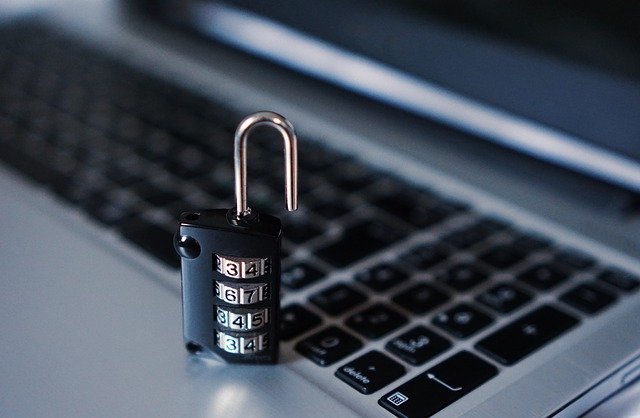A strong cybersecurity policy is essential as we move to work from home. If you are a Human Resources leader, then you need to know about the basics of cybersecurity today. You also need a robust cybersecurity policy to address critical risks. Cyber risks include data breaches, phishing, or malware attacks. These issues can cause significant harm to a business. Most organizations have a workplace policy in place but fail to create a cybersecurity policy.
In today’s blog:
- What is cybersecurity?
- What is a cybersecurity policy?
- Which are the different types of security policies?
- Why are cybersecurity policies important?
- What cybersecurity challenges do remote employees face?
- Cybersecurity policy in remote work: A necessity
- How to design a cybersecurity policy: Step-by-step guide
- 3 ways to educate employees on cybersecurity policy
- Summary
- FAQs
What is cybersecurity?
According to a report, 68% of business leaders feel an increasing amount of cybersecurity risks. Cybersecurity or computer security is the protection associated with computers or networks. This security is provided against:
- Theft or damage of hardware, software
- Stealing electronic data
- Disruption of computer services
Next, let’s understand the 4 main evils of the cyber world:
What is a cyber threat?
Typically, a cyber threat is any act that threatens the functioning of a computer system. So this implies gaining access to the system, accessing files, and stealing information.
What is a cyber attack?
This one’s a scarier version of the cyber threat. A cyber attack is an attempt to change, disable, or steal data in order to gain unauthorized access. In addition, it has the potential to disable an entire computer system or use networks as launch points for other cyber attacks.
What is a cyber risk?
Cyber risks generally involve any loss resulting from data breaches. Furthermore, these include financial losses, data exposures, and reputation damage.
What is cybercrime?
This is an umbrella term for all the security issues a computer system faces. These computer-oriented crimes can threaten personal, organizational, or national security. Moreover, a computer system may either be used in a crime or be the target of cybercrime itself.
What is a cybersecurity policy?
Now that we’ve understood the basics, let’s get into the nitty-gritty of policymaking.
As is evident from the previous section, cybersecurity is a serious deal. A common misconception is that the IT department is the only one that should be worried about cybersecurity. Since a cyber issue can potentially harm every employee of the organization, it is imperative to have a cybersecurity policy in place.
A cybersecurity policy basically lays down the rules for employees, board members, and third party users on practicing computer security. These can range from email encryption regulations to social media restrictions. Furthermore, these policies set guidelines and standards of behaviour that safeguard against cyber threats to company systems and data.
Which are the different types of security policies?
A security policy is a broad term given to documents that define a company’s security vision and goals. It also lays down the scope as well as the responsibilities of employees towards organizational security. There are several variations of security policies. However, there are 3 main types:
1. Issue-Specific Policy
This type of security policy deals with functional issues. The policy outlines a particular issue and its related security procedures. Instructions are given to the relevant employees to help solve the issue. Examples include email and encryption policies.
2. System-Specific Policy
A system-specific policy is concerned with the security of a specific computer system. Therefore it deals with the hardware, software, and technical infrastructure of that individual system.
3. Master Policy
A master or organizational security policy is basically a plan of the entire organization’s security program. It sets the security goals and implementation strategies to maintain complete security.
Why are cybersecurity policies important?
It is not surprising that cybersecurity is given so much focus, given the risks associated with a lack of it. Cybersecurity policies are important because their absence can lead to cyberattacks and data breaches. These policies help to better understand information security and applications. Moreover, they explain the responsibilities of every stakeholder in the company towards protecting systems.
Consequently, a strong cybersecurity policy can improve employer reputation and organizational credibility. Everyone wants their data to be stored safely, which is guaranteed with a computer security policy.
What cybersecurity challenges do remote employees face?
There are several security issues that can arise in the workplace. A McAfee report found that internal employees caused 43% of loss of data; half of which was accidental. While technology continues to evolve and minimize the risks of hacking, it is important to know the challenges that your workers may face.
-
Lack of Security Awareness
This is the most common problem that employees face. They simply don’t know enough about cybersecurity. This leads to a major issue: ignorance. Employees who are not aware of their roles and obligations towards security, tend to ignore procedures. As a result, this can lead to accidental data leaks and cyber-attacks.
Current and future HR leaders must therefore make cybersecurity training mandatory. It is crucial to developing a security strategy that maintains employee awareness.
-
Susceptibility to Phishing
Phishing is one of the biggest security threats to employees. Phishing is the wrongful means of gaining sensitive information by disguising oneself as a trustworthy person/institution. A lot of us have gotten emails or text messages asking for our bank details in return for ‘credit points.’ This is a typical example of phishing.
Employees are most susceptible to email phishing. This can give the attacker user information which can be then used to enter the computer system. It is imperative to install a firewall to prevent any type of phishing.
-
Online Privacy
Although privacy seems like a fading concept nowadays, it is still significant. Privacy issues include tracking user information, identify theft, and hacking. Employees must make sure to read websites’ privacy policies. They must also install an ad-blocker so that they have control over what is shared. Additionally, companies can invest in end-to-end encryption for better privacy settings.
-
Inadequate Backup Resources
Ah, yes. We’re going to talk a little about the universal archenemy, backup. How many times have you forgotten to backup your computer or phone and lost precious data in the process? Backup and recovery activities are important because they keep a copy of the original data in the event of hardware or software failure.
Storing data in additional copies helps to protect against data loss and corruption. The best part about taking a backup is its convenience of storage mediums. Thus, you can store data backup in a USB stick, external drive, or the cloud.

Absence of Multi-Factor Authentication
You’re probably familiar with single authentication methods. These usually involve using a single username and a password. The issue with this is that if you lose your password, it’s endgame. It is inadvisable to store sensitive data with single-factor authentication (SFA).
2-factor authentication or multi-factor authentication (MFA) are your saviours in today’s world. These include everything from passwords and PINs to fingerprints and retinal scans. The way these protect your data and identity is through multiple authorizations. In the likely event that someone cracks your password, it is highly unlikely that they can get through to the second authentication. Hence, the former is something you have while the latter is something you are which is unique to you.
Cybersecurity policy in remote work: A necessity
COVID-19 has made remote working the new normal. It is possible that remote working will continue in some sectors such as IT well after there are any health threats. In such a situation, HR must emphasize the need for cybersecurity for remote workers.
-
Setting up a secure environment
Firstly, it is harder to create a secure work environment at home, than at the workplace. It is not an overnight job either. Creating one requires pre-configuring settings, backing up data and setting up 2FA.
Remote employees may also need to use VPNs for added security. All of these factors need careful analysis and consideration to maintain organizational cybersecurity.
-
Distinction between company and personal data
Secondly, most employees have separate work and personal devices. This is largely because office computers tend to have more security controls. However, not every remote employee has a separate work device that can protect and monitor suspicious activities.
Remote workers must ensure that their personal and company data is different and far from each other. They must also take steps to prevent anyone from accessing their devices. Furthermore, personal web browsing must not be carried out during work hours.
-
Increased Human Error
Thirdly, an office setting does play a role in reducing the risks of human error. The number of global phishing cases has accelerated in the past six months. This is because most employees accidentally fall for malicious scams which could be prevented if they were at work.
There are several reasons such as:
- Number of distractors
- Improper security measures
- WiFi settings
When at home, employees are at further risks of getting fraudulent emails which can endanger organizational data.
-
Data security and privacy
Fourthly, how many of us really know what kind of WiFi we have at home? We tend to take these things lightly but they play a major role when it comes to working remotely. Employees must ensure that they are never using public WiFi. Moreover, the router must be secured to prevent cyber attacks on connected devices.
Passwords must be strengthened and software updated to reduce cyber risks. Thus remote workers must be provided with cyber training.
How to design a cybersecurity policy: A Step-by-step guide
- Establish Password Requirements
A good cybersecurity policy will outline procedures on password creation, updation and storage. It will also mention the type of authentication required for different user accounts.
- Outline Security Measures for Email
A standard cybersecurity policy will contain guidelines on sharing mail addresses, preventing phishing, and blocking spam emails.
- Procedures to Handle Sensitive Data
Sensitive data such as user and company details cannot be shared with everyone. A cybersecurity policy must define what categorizes as sensitive data. It must also issue sharing permissions and methods of data destruction in the event of a threat.
- Set Rules for Handling Technology
This is especially important during remote work. As a result, proper guidelines must be established on:
-Device accessibility and storage
-System updates on personal computers
-Screen locking
-Data scanning and protection. - Establish Guidelines for Social Media
Social media is the number one way for hackers to gain access to information. Thus, standards for social media access and usage must be properly set. These include what kind of information to share and how much usage is allowed during work hours.
- Develop Cybersecurity Response Plans
In the unfortunate event that a cyber attack occurs, users must know what steps to take. Hence include procedures on response actions, staff responsibilities, and incident reports.
- Update Guidelines Consistently
There is nothing like the ‘best policy.’ A strong policy is one that is updated to match evolving issues regularly. Ensure that you review your cybersecurity policy to maintain maximum security.
3 ways to educate employees on cybersecurity policy
Issues pertaining to cybersecurity are much more important than may think. With the pivotal role that machines play in our work lives, HR must be vigilant of what employees can do to minimize security risks.
1. Invest in Training
The world of human resources is familiar with all kinds of training, be it sales training or learning. Similarly, CHROs must invest time and money into cyber training as well. Like we’ve seen earlier, a lack of awareness can be harmful to every stakeholder. Employees must be told about what security issues are pertinent to the company and what is expected of them. They must be aware of how data breaches and identity theft can occur.
The Asanify AI engine can generate automated quizzes from any document! Formulate questions related to cybersecurity and encourage workers to stay up to date with security measures today!
2. Answer cyber security related FAQs
A number of HR departments are using AI to save time by deploying HR chatbots to answer FAQs. Since chatbots can be programmed with specific data, you can store cybersecurity protocols and guidelines within them.
Asanify’s Employee chatbot can answer employee questions 24*7 so that they can access the information at any time of the day. Additionally, the chatbot can also redirect the user to the specific document or resource. This saves valuable HR time as FAQ chatbots can answer most questions related to organizational policies and employee queries.

3. Effective Communication and Implementation
Employees are a company’s first line of defense. In order to build a secure work culture, issues relating to cybersecurity must be communicated efficiently. Sending company-wide email announcements and circulating posters is one way of effective policy communication. Instead of harping on ‘follow guidelines’, change the narrative to ‘here’s why its important.’ Another way HR can encourage awareness and excitement about policies is through gamification tools.
Summary
To begin with, we understood the basics of cybersecurity and what is defined by a cybersecurity policy. Then, we noted points on why a cybersecurity policy is essential and the different kinds of security policies. These included data privacy and better organization reputation and credibility.
In addition, we covered the various cybersecurity challenges faced by employees. The section on remote working proved that cybersecurity measures are very important during remote work.
Further, we took a deep dive into how to develop a strong cybersecurity policy. The steps mentioned will ensure that employees and the company are safeguarded against scams and hackers. Also, make sure that you are educating your employees against cyber threats towards building a secure work culture.
So what are you waiting for? Design your cybersecure safety net today!
FAQs
There are 3 main types of security policies:
1. Issue-specific policy: Concerned with functional issues of a system
2. System-specific policy: Associated with a specific computer system
3. Master (Organizational) Policy: An outline of a company’s security program
The purpose of a cybersecurity policy is to set procedures and standards to safeguard user data against malware. Thus, it is important as it prevents cyberattacks and information breaches.
In addition to security protocols and guidelines, a cybersecurity policy must include:
1. Data Privacy Safeguards
2. Approval Processes
3. Software Copyrights
4. Security Reports Formats
Not to be considered as tax, legal, financial or HR advice. Regulations change over time so please consult a lawyer, accountant or Labour Law expert for specific guidance.



